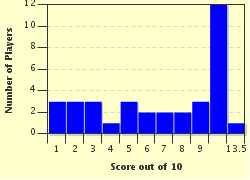Quiz Answer Key and Fun Facts
1. What was the level cap in "Everquest" Classic?
2. Norrath has a wide and active pantheon, and several of the gods were responsible for creating the playable races of "Everquest." Among the most active was Brell Serilis. Which playable races did he create?
3. The various elves of Norrath derive their creation from the work of two gods who hate each other bitterly and feuded over the elves. Which two gods were these?
4. There were three continents in "Everquest" Classic: Faydwer, Antonica, and Odus. Between them there were two oceans. What were they?
5. The various melee classes had special armor quests available from the Temple of Solusek Ro after level 30. Match the quest armor set with the appropriate class.
6. Among the classes of "Everquest", there was melee, casters, and hybrids. Hybrid classes combine the features of 'parent' caster and melee classes. Which of the following was *not* a hybrid class?
7. It's not high fantasy without dragons, and there were only two of them when "Everquest" launched. What were their names?
8. In addition to dragons, the highest level players in "Everquest" Classic could raid several alternate planes of existence, the homes of gods. Which planes were available in "Everquest" Classic?
9. The "end game" of "Everquest" Classic describes the activities of players who had reached max level. While much of the end game involved raids in high level zones involving many groups of players, there were also single-group zones for end game players. Which of the following was not a single group zone in the end game of "Everquest" Classic?
10. From its beginning and through its various expansions, "Everquest" has featured giants in many forms. Which of the following varieties of giant did *not* appear in "Everquest" Classic?
Source: Author
Kandik
This quiz was reviewed by FunTrivia editor
kyleisalive before going online.
Any errors found in FunTrivia content are routinely corrected through our feedback system.

